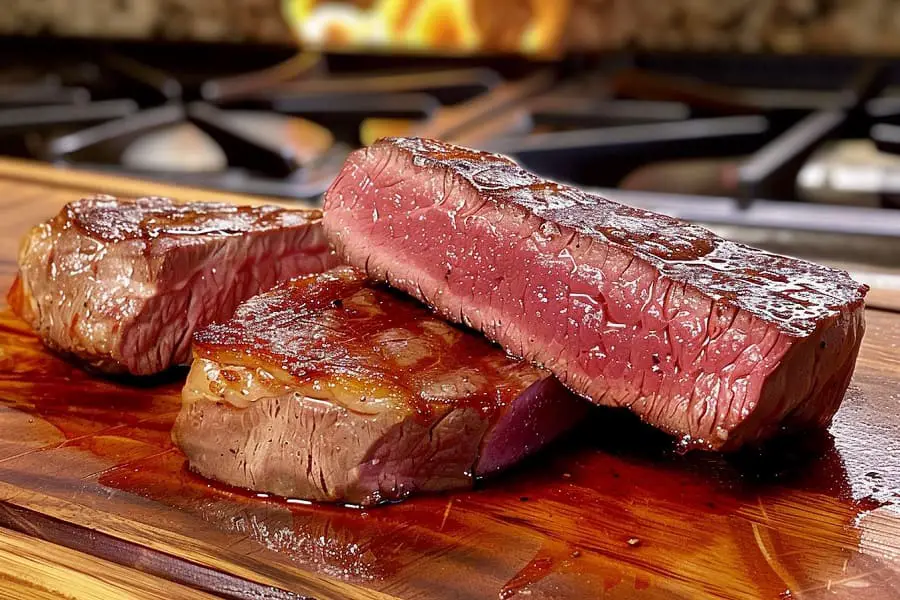When it comes to Brazilian barbecue, picanha and alcatra are two of the most cherished cuts of meat. Both are staples in Brazilian churrasco, but if you’re new to these terms, understanding their differences can be a bit confusing. Whether you’re preparing for a backyard cookout or simply expanding your culinary knowledge, knowing the distinction between picanha and alcatra is essential. In this article, we’ll explore these two popular cuts in detail, highlighting their unique characteristics, ideal cooking methods, and why they are so beloved in Brazilian cuisine.
Understanding Picanha
Picanha, often hailed as the “queen of Brazilian barbecue,” is a prized cut known for its rich flavor and tender texture. It comes from the top of the rump, where a thick layer of fat rests on the meat, contributing to its succulent taste when grilled.
History and Origin
Picanha’s roots run deep in Brazilian culture. Historically, this cut was overlooked in favor of more popular steaks until Brazilian gauchos (cowboys) discovered its potential when cooked over an open flame. Today, picanha is a must-have at any Brazilian steakhouse and a symbol of churrasco.
Best Cooking Methods
The fat cap on picanha is what sets it apart. To cook it perfectly, start by lightly scoring the fat, then season the meat generously with coarse salt. Picanha is typically cooked whole on a skewer over a charcoal grill, then sliced into steaks. This method yields a juicy, flavorful piece of meat with a crispy, charred exterior.
Pros and Cons
- Pros: Rich flavor, tender texture, perfect for grilling.
- Cons: Requires careful cooking to avoid flare-ups due to the fat content.
Understanding Alcatra
Alcatra is another popular Brazilian cut, valued for its versatility and leaner profile. It comes from the lower part of the rump, including several muscles, which makes it slightly tougher compared to picanha.
History and Origin
Alcatra has always been a staple in Brazilian cuisine. While it may not hold the same star status as picanha, it is appreciated for its versatility and is commonly used in various dishes beyond grilling.
Best Cooking Methods
Alcatra benefits from marination to tenderize the meat and enhance its flavor. It can be grilled, roasted, or even cut into smaller pieces for stews. When grilling, aim for a medium-rare finish to maintain juiciness.
Pros and Cons
- Pros: Versatile, leaner, suitable for various cooking methods.
- Cons: Can be tougher and less flavorful than picanha if overcooked.
Key Differences Between Picanha and Alcatra
Texture and Flavor
Picanha is known for its tender, juicy texture and robust flavor, enhanced by its fat cap. In contrast, alcatra is leaner and can be slightly tougher, with a milder flavor.
Fat Content
One of the most notable differences between the two cuts is the fat content. Picanha’s thick fat layer is essential to its rich taste, while alcatra is much leaner, appealing to those who prefer less fatty meats.
Cooking Methods and Recommended Recipes
Picanha is best suited for grilling over an open flame, while alcatra’s versatility allows it to be grilled, roasted, or stewed. For those eager to experiment, try making picanha steaks or an alcatra-based stew to experience their distinct qualities.
Availability and Cost
Picanha tends to be more expensive and is often considered a premium cut. Alcatra, being more common, is usually more affordable and accessible.
Picanha vs. Alcatra: Which One to Choose?
When choosing between picanha and alcatra, consider your cooking method and flavor preferences. If you’re grilling and love rich, juicy meat, picanha is your go-to. However, if you prefer a leaner, more versatile option, alcatra is an excellent choice.
Expert Tips for Cooking Picanha
For the best results with picanha, cook it on a hot grill with the fat side down initially to render the fat, which will help baste the meat as it cooks. Avoid overcooking, as this can dry out the meat.
Expert Tips for Cooking Alcatra
To get the most out of alcatra, marinate the meat before cooking to tenderize it and add flavor. When grilling, aim for a medium-rare doneness to keep it tender. Slicing the meat against the grain will also make it easier to chew.
Alternative Cuts and Substitutes
If picanha or alcatra are not available, consider other cuts like tri-tip (similar to picanha) or top sirloin (similar to alcatra). For those on a plant-based diet, portobello mushrooms or seitan can serve as excellent substitutes when marinated and grilled.
Summary & FAQ
Summary
Both picanha and alcatra are exceptional cuts of meat, each with its own unique characteristics. Picanha offers a richer, fattier experience, perfect for grilling enthusiasts, while alcatra provides a leaner, more versatile option for a variety of dishes.
FAQs
Can you substitute alcatra for picanha?
Yes, but expect a leaner, less fatty experience. Marinating alcatra can enhance its flavor.
What is the best seasoning for picanha?
Coarse salt is ideal, allowing the meat’s natural flavors to stand out.
Where can I buy picanha or alcatra?
These cuts are often available at specialty butchers or Brazilian grocery stores.


1 thought on “What is the difference between picanha and alcatra?”